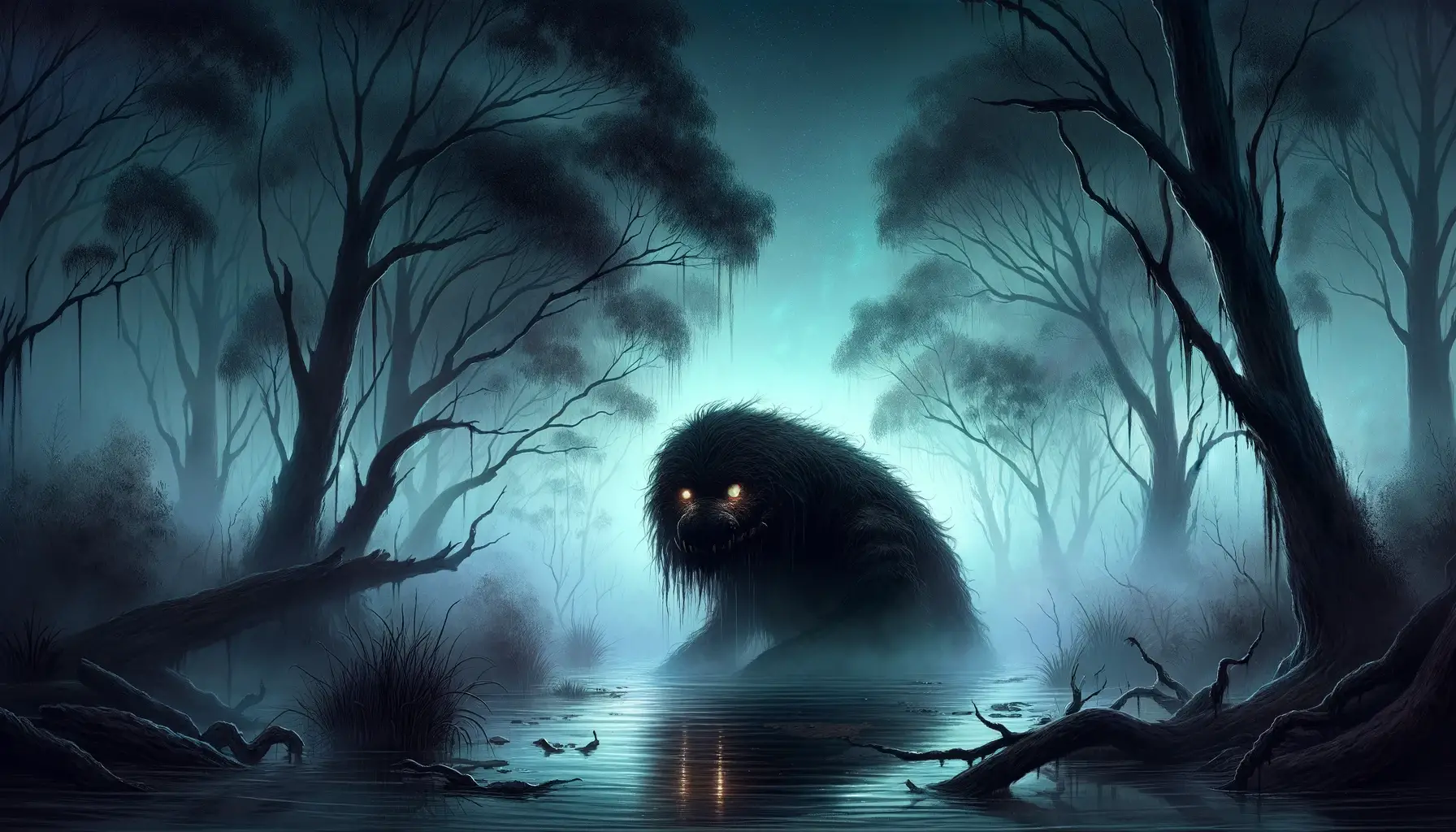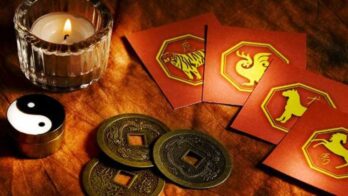The Bunyip, shrouded in the depths of Australian Aboriginal folklore, stands as a testament to the rich and diverse cultural tapestry of Australia and its peoples deeply-rooted connection with the land. This mythical creature, whose name likely stems from languages such as Wemba-Wemba or Wergaia, resonates with meanings like “devil” or “evil spirit.” It occupies a significant place in the Aboriginal mythos, said to lurk in the murky waters of swamps, billabongs, creeks, and riverbeds, weaving a narrative that intertwines the mystical with the real.
Descriptions and Variations
The Bunyip’s physical form is as varied as the stories it inhabits. Among the myriad descriptions, the Bunurong people of the Kulin nation describe it as a huge, black, seal-like animal. The Wemba-Wemba tribe, on the other hand, depicts it with a dog-like face, crocodile-like head, long neck, and dark fur. Colonial tales from the 19th century also contribute to this tapestry of descriptions, with settlers recounting encounters with creatures resembling large seals or amphibious monsters, adding to the enigma of the Bunyip.
The Bunyip in Aboriginal Culture
In the rich tapestry of Aboriginal culture, the Bunyip serves multiple roles. It is a cautionary figure, warning of the lurking dangers in the waters. For example, the Anaiwan people from New England tell of a Bunyip that guards the waterholes. It is also a spiritual entity, embodying the raw, untamed essence of the Australian wilderness. This duality paints the Bunyip not just as a creature of fear, but also as a guardian of the natural order.
Colonial Encounters and Interpretations
The Bunyip’s journey into colonial Australian lore began in the 1800s when European settlers, awestruck and often intimidated by the continent’s unfamiliar wildlife, reported sightings. A notable 1847 account in the Geelong Advertiser described a creature found in the Barwon River with a neck resembling an emu, a head like a horse, and an elongated body. These reports, often sensationalized, added a layer of mystique and fear to the Bunyip’s legend, while further distinguishing the creature from more common aquatic wildlife, such as the crocodile or a cassowary.
The Bunyip in Modern Culture
Transitioning from a symbol of fear to a figure of cultural curiosity, the Bunyip has found a place in modern Australian culture, particularly in children’s literature. The character of Alexander Bunyip, created by Michael Salmon, is a notable example, turning the fearsome creature into a friendly character in “The Monster that Ate Canberra.” Festivals like the Murray Bridge Bunyip Festival celebrate this legendary creature with art exhibitions, performances, and storytelling, showcasing the Bunyip’s transformation from a mythical beast to a cultural icon.
Scientific Theories and Explanations
The Bunyip myth has been the subject of various scientific theories and speculations. In 1871, Dr. George Bennett of the Australian Museum suggested that the Bunyip could be a lingering memory of prehistoric creatures like the Diprotodon. Australia used to be home to a variety of “megafauna” – imposingly large animals who were alive even as early humans reached the continent, which may account for these memories and an associated oral history.
Seal sightings far inland, as proposed by Charles Fenner, have also been posited as explanations for some Bunyip stories, suggesting a case of misidentification rather than encounters with a mythical beast.
Artistic and Literary Depictions
The Bunyip’s mysterious and elusive nature has inspired a diverse range of artistic expressions. In literature, it has been portrayed from terrifying to whimsical, as seen in books like “The Bunyip of Berkeley’s Creek.” In visual arts, it takes various forms, from Sidney Nolan’s abstract representations to contemporary depictions in Australian Indigenous art, often symbolizing the deep connection to the land and its waterways.
A Symbol of Environmental Conservation
In recent times, the Bunyip has emerged as a symbol of environmental conservation. Its association with Australia’s water sources has been leveraged in campaigns promoting the protection of wetlands and rivers. This modern interpretation highlights the Bunyip’s role in fostering a deeper understanding of the significance of preserving Australia’s unique natural habitats and biodiversity. Whether the Bunyip is considered a lost wonder or a vicious defender of natural wetlands, the moral is the same – that these wild habitats should be protected.
An Enduring Legacy
The Bunyip’s journey, from a creature of Aboriginal lore to a beloved element of Australian cultural identity, reflects the evolving relationship between the Australian people and their folklore. Today, it stands as a multifaceted symbol, embodying the mysteries of the Australian wilderness, the richness of Aboriginal storytelling, and the importance of environmental stewardship.
To delve deeper into the Bunyip’s lore, one may explore academic studies on Aboriginal mythology, historical archives detailing colonial encounters, and a plethora of modern literary and artistic interpretations. Each of these avenues offers a unique perspective on the Bunyip, enriching our understanding of this captivating element of Australian heritage.
At Ancient Theory we only use trusted sources to document our articles. Such relevant sources include authentic documents, newspaper and magazine articles, established authors, or reputable websites.
- Wikipedia's Comprehensive Article on the Bunyip: This detailed entry discusses various theories about the Bunyip's origins, including the suggestion that it may be a cultural memory of extinct Australian marsupials like the Diprotodon, or inspired by encounters with animals like the southern cassowary [Source]
- Historic Mysteries on the Bunyip: This article offers insights into the Bunyip's descriptions and theories about its origins, including the possibility of it being a seal or a cultural memory of extinct marsupials [Source]
- AustLit's Review of 'Bunyips: Australia's Folklore of Fear': This source reviews a book that examines the role of the Bunyip in Australian folklore, discussing its origins and portrayal in literature [Source]
- The Aussie Handbook on the Bunyip Legend: This engaging piece explores the origins, legends, and modern interpretations of the Bunyip, examining its place in indigenous mythology and Australian culture [Source]
- LoreThrill on the Bunyip and Yowie: This article explores the confusion between the Bunyip and Yowie, two distinct creatures of Aboriginal mythology, and discusses the origins and evolution of the Bunyip in folklore [Source]
- AlchemLearning on the Bunyip: This source answers frequently asked questions about the Bunyip, covering its origins, significance in Aboriginal cultures, and influence on Australian culture [Source]
- Bizarre Wonders on the Bunyip: This article provides accounts of Bunyip sightings and discusses various theories about the creature, including its status as a mythical creature or misidentified animal [Source]






